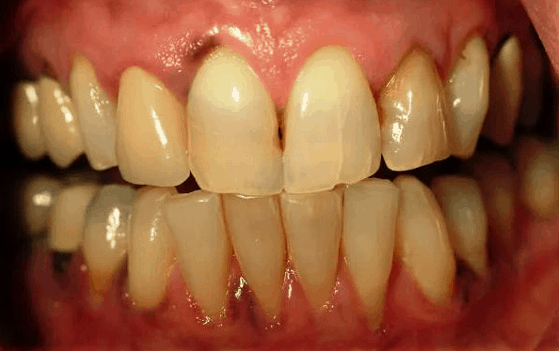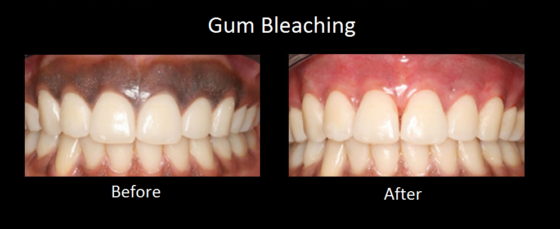People today are increasingly conscious about their personal appearance, and much attention has been focused on the smile. The perfect smile requires an optimal interrelation between the teeth, the surrounding oral tissue, and the gums. When optimal harmony exists between these three components, the result is a smile likely to be perceived as aesthetic.
Some dental problems, especially gum related disease can ruin the appearance of the gums. Hyper-pigmentation of the gingiva can severely compromise the esthetic appearance of an individual.
Melanin pigmentation is generally concerned physiological but if it is too much it can certainly take away the confident smile from persons face. However, Melanin in the skin is very common in many Indians due to genetic factors.
What is hyperpigmentation?
The color of the gingiva plays an important role in overall aesthetics. Melanin, carotene, reduced hemoglobin, and oxyhemoglobin is the main pigments contributing to the normal color of the oral mucosa. In mammals, melanin pigments are brown, black or blue depending on the vascularity of the overlying tissue and epithelium.
Hyperpigmentation of the gingiva is benign in most cases and does not present a medical concern. However, it may cause aesthetic problems and embarrassment, particularly if the pigmentations are visible during speech and smiling.

Causes:
- Systemic conditions such as
- Endocrine disturbance
- Albright’s syndrome
- Malignant melanoma
- Antimalarial therapy
- Peutz-Jeghers syndrome
- Trauma
- Hemochromatosis
- Chronic pulmonary disease
- Racial pigmentation
- Genetic factors
- Tobacco use
- Prolonged administration of certain drugs especially – antimalarial agents and tricyclic antidepressants.
- High levels of oral melanin pigmentation are normally observed in individuals of African, East Asian, or Hispanic ethnicity.
- Smoking.
When are you an ideal candidate?
- Skin shade not very dark toned, but gingiva is deeply pigmented.
- Gum health not compromised or is pretreated.
- The adequate thickness of gums.
Treatment modalities:
- Surgical technique – Gum surgical procedure in which the gum hyperpigmentation is eliminated or reduced by different techniques. It is the most common technique. The overlying epithelium is denuded surgically and the connective tissue is left to heal. It is simple, inexpensive and does not require sophisticated armamentarium. It is easy to perform. Might result in excessive bleeding and discomfort. A dressing is given for one week.
- Bur abrasion – It is similar to the surgical technique. It is a simple, safe and non-aggressive method. It does not require any sophisticated equipment. The clinician takes the handpiece and with a controlled speed and managing the pressure gives strokes along the gum to remove the colored gums.
- Electrosurgery – Requires more expertise that scalpel technique. Prolonged or repeated application of current to tissue induces heat accumulation and then tissue destruction. Contact with the underlying bone and teeth needs to be avoided.
- Cryosurgery – It is a branch which makes use of local freezing for the controlled destruction of tissues. Liquid nitrogen and tetrafluoroethane are used. The advantage of this process is that it does not require anesthesia or dressing. It is painless and has shown excellent results. The disadvantages are depth control is difficult and prolonged freezing can cause destruction.
- Free gingival graft – It requires an additional donor site and color matching.
- Lasers – It has easy handling, short treatment time, control over bleeding, and better sterilization effects. The use of dressing is not needed. However mild postoperative discomfort is common. It requires the need for expensive and sophisticated equipment.

References:
Expert opinion
Dr. Manan Dhulia Dental Director at Sabka dentist says “Along with appearance, the untreated gum disease will stress the immune system. And in the long term, it may cause tooth loss”.
Dr. Preethi Nagarajan dental director at Sabka dentist says “It may well cause psychological problems for these patients, especially those whose appearance is of vital importance. Therefore many individuals, particularly women with severe melanin pigmentation, contact periodontists to overcome what they feel is a defect in their social presence”.
Dr. Zita AntaoDental Director of Sabka dentist says “Good health of the gums can improve the appearance of the overall smile and it can boost your confidence”.











One thought on “What is Gum Depigmentation and how can it be treated?”
Nice article well written